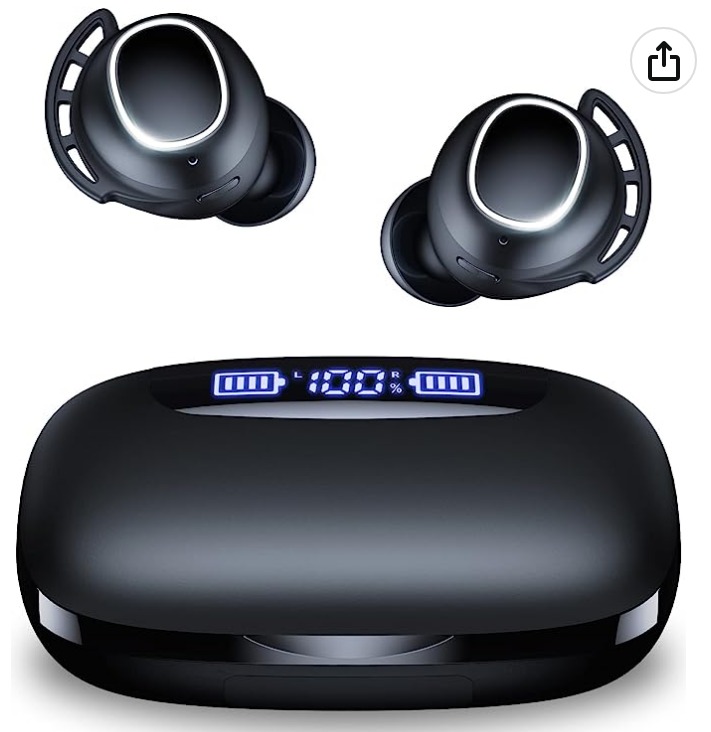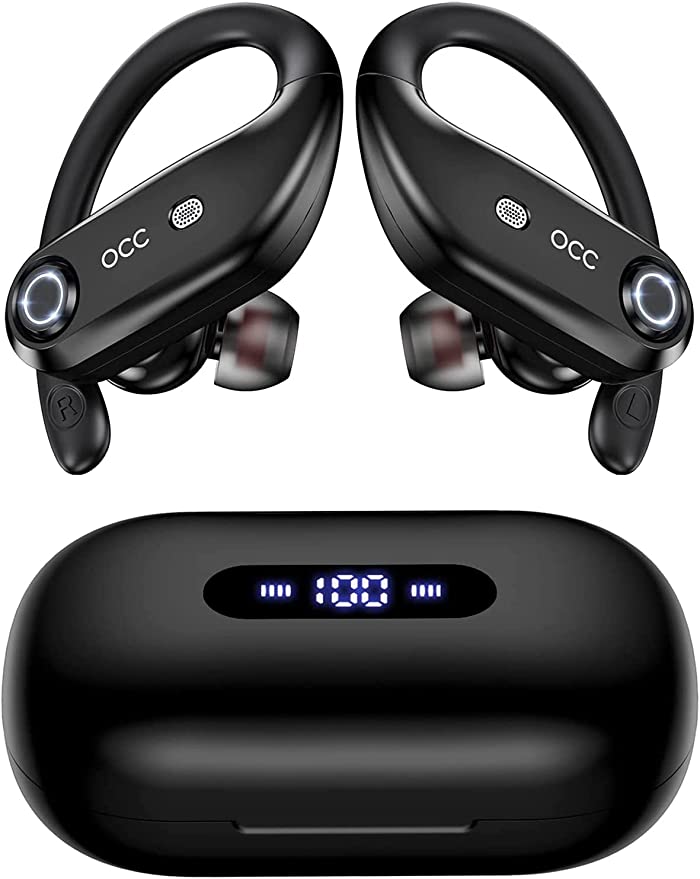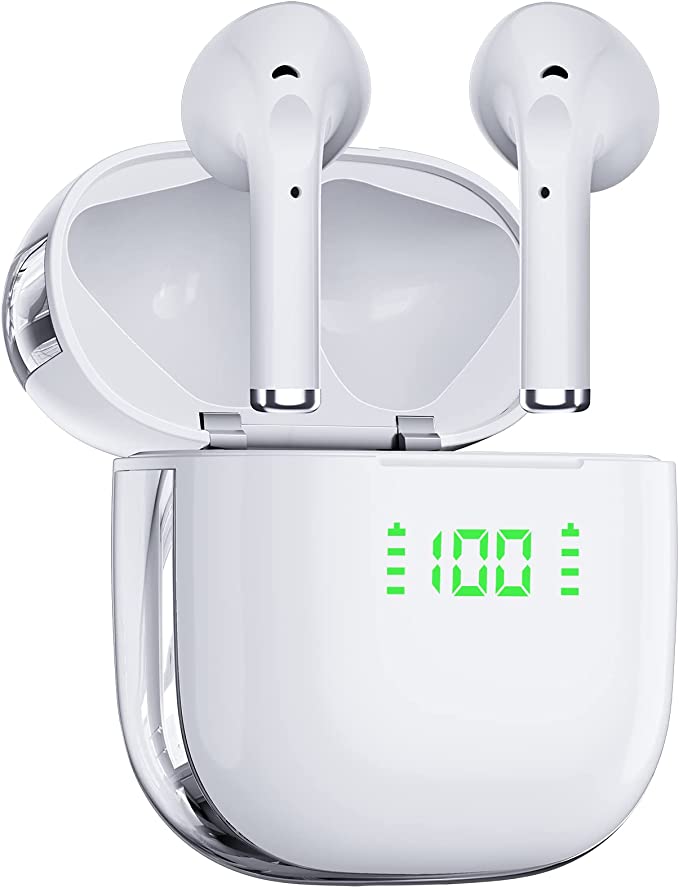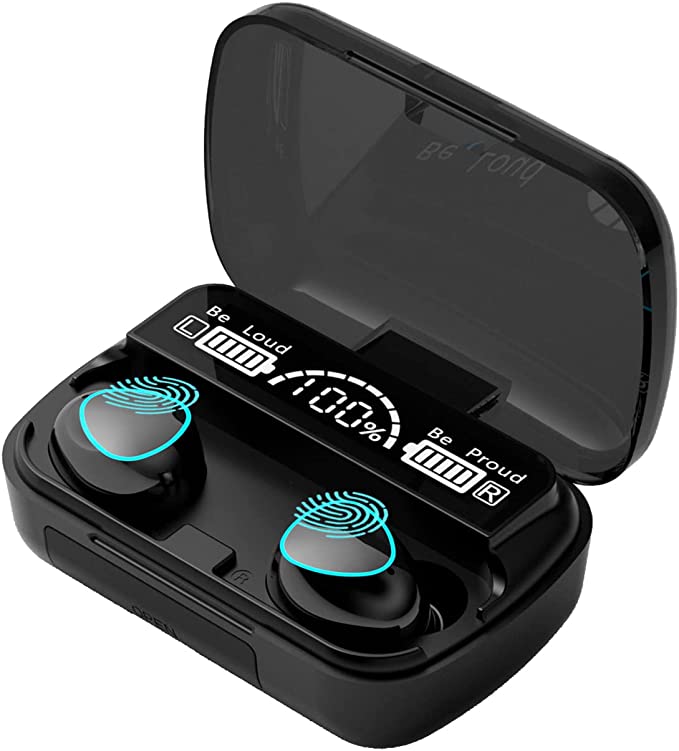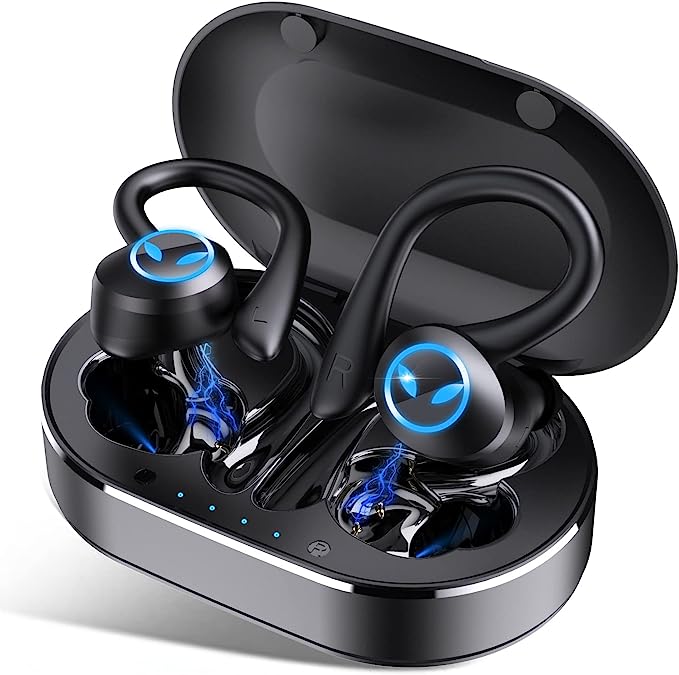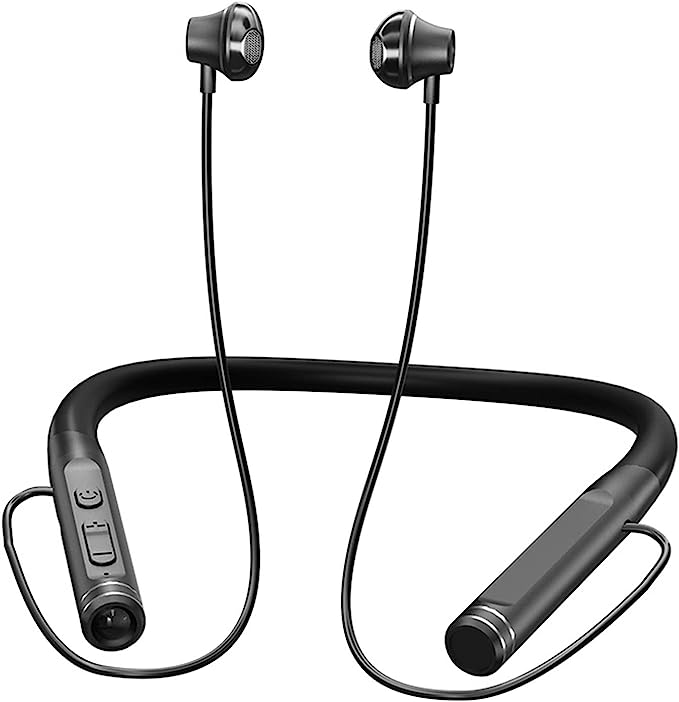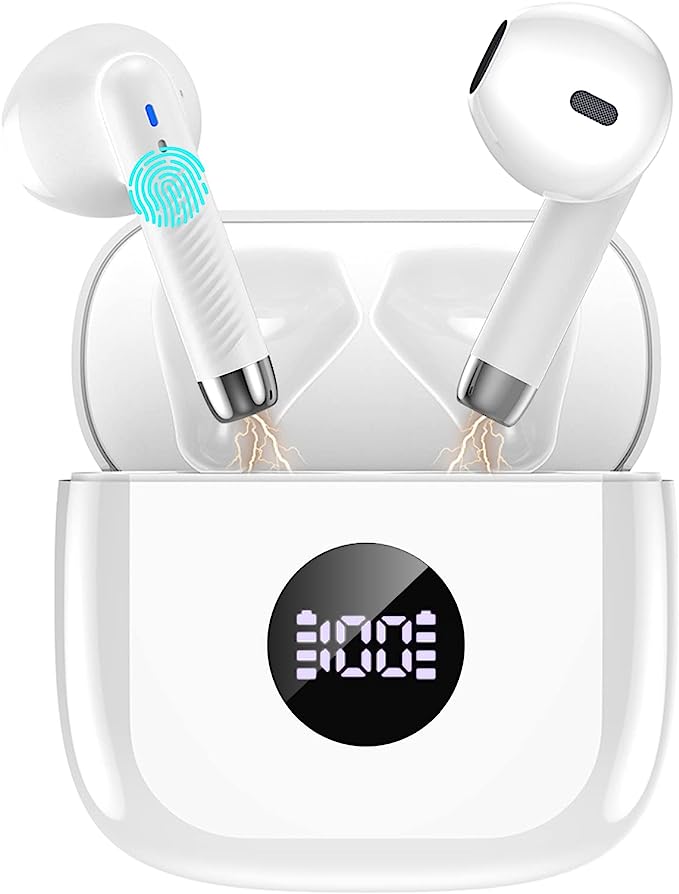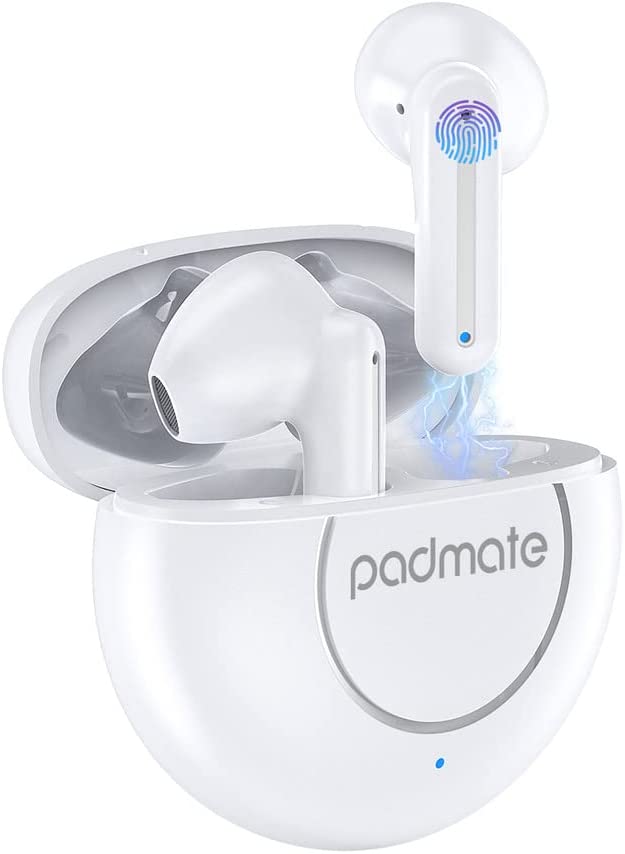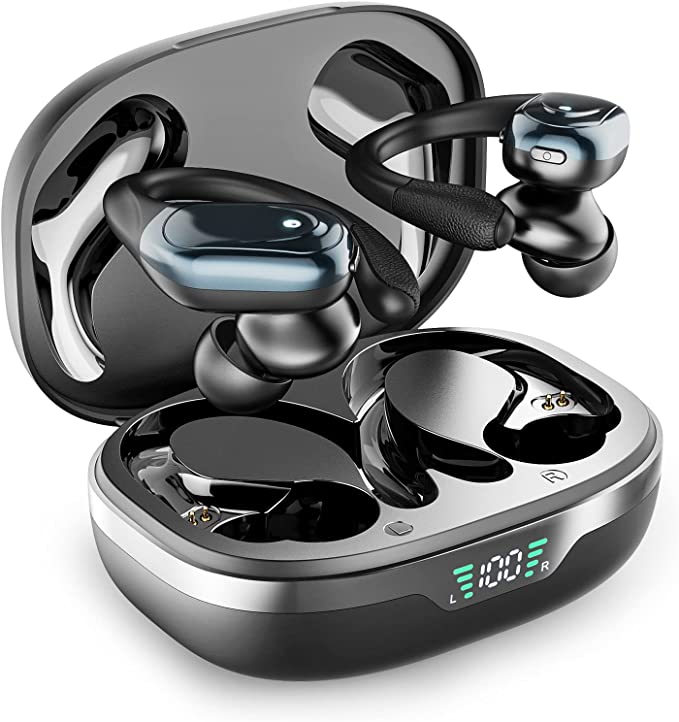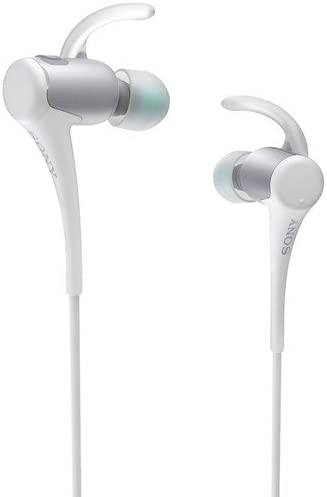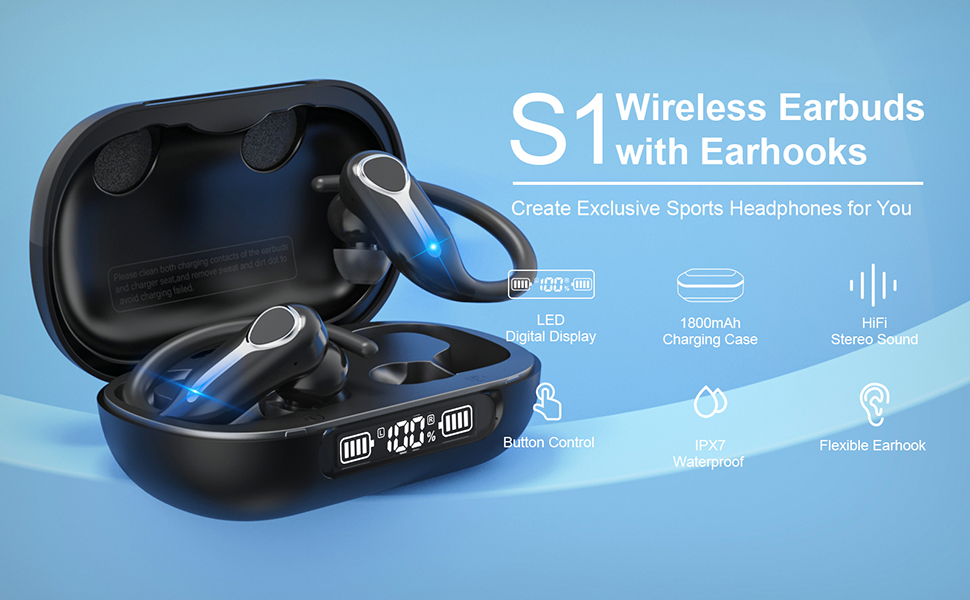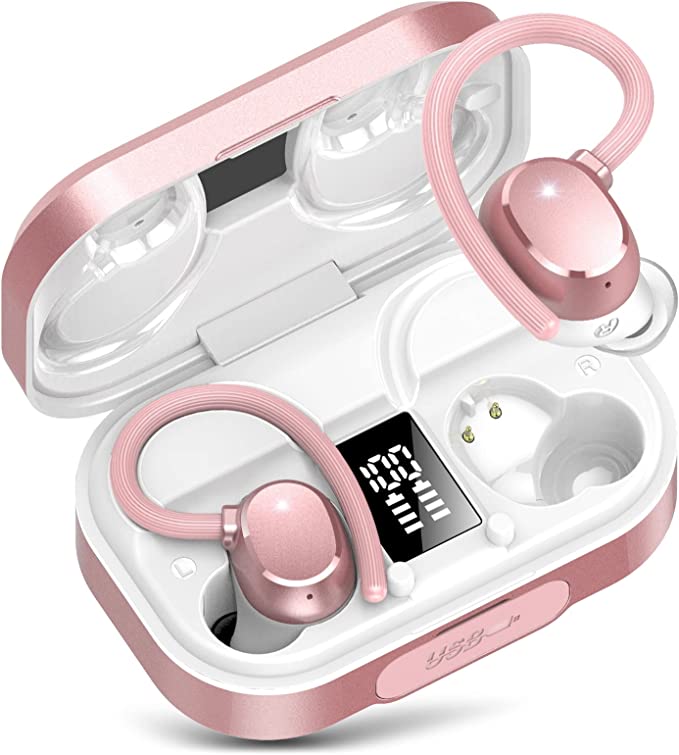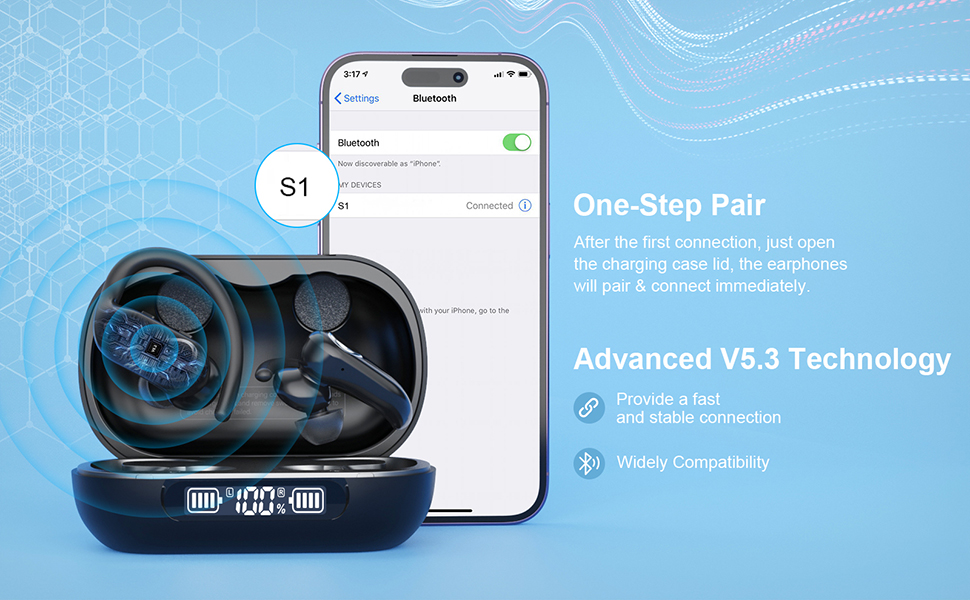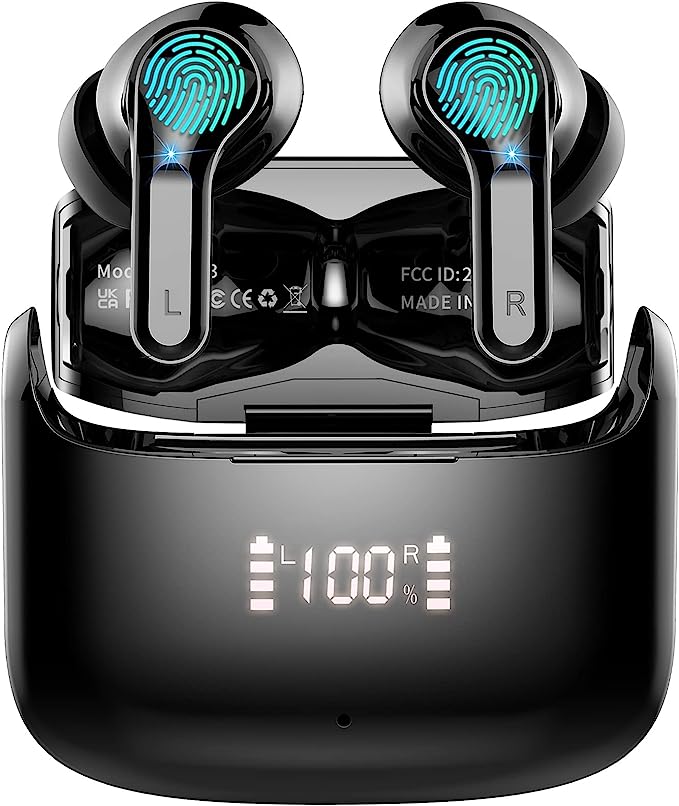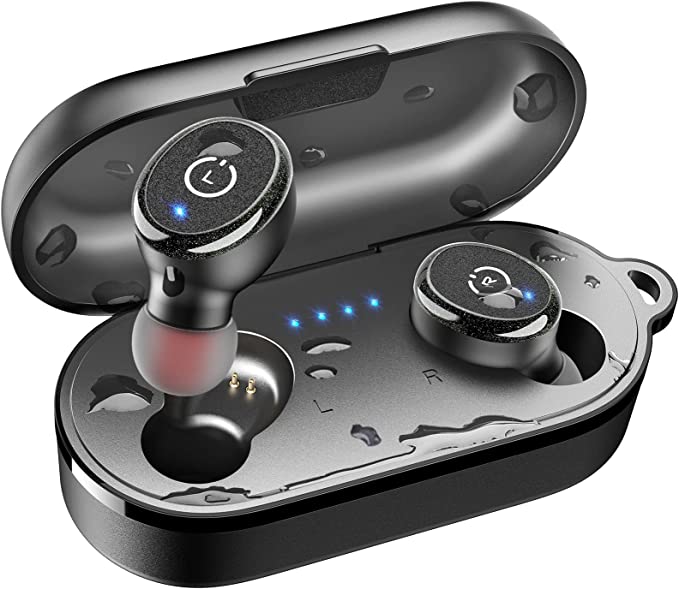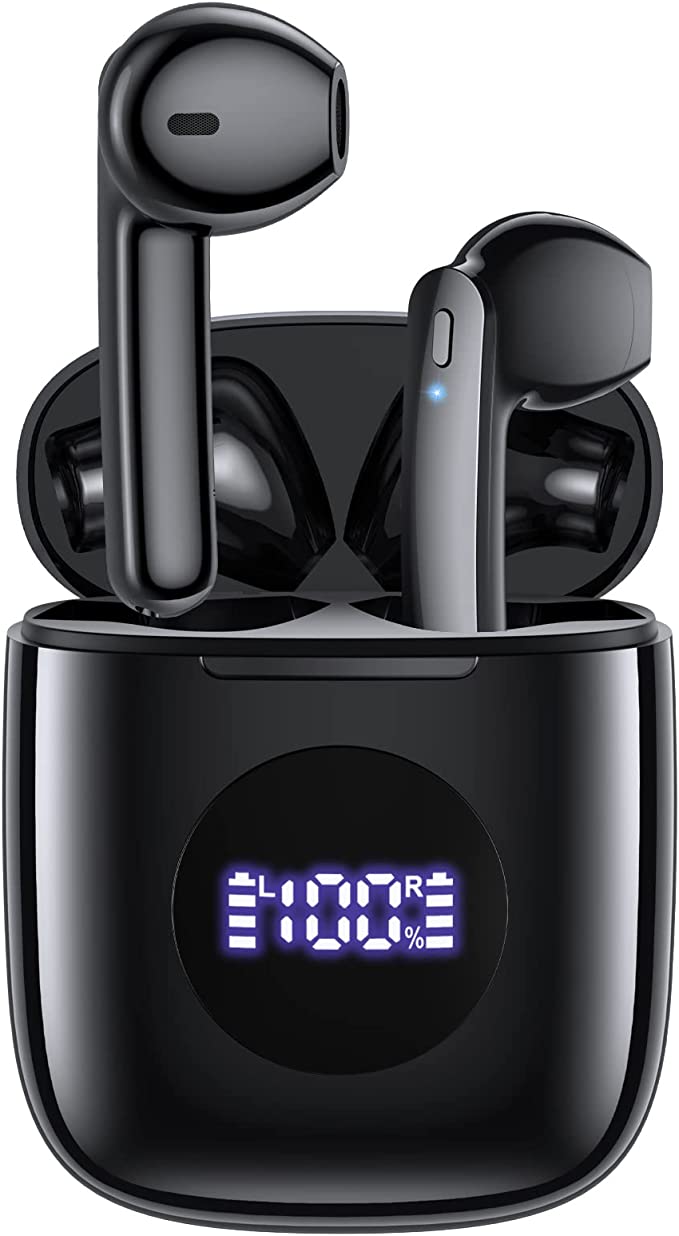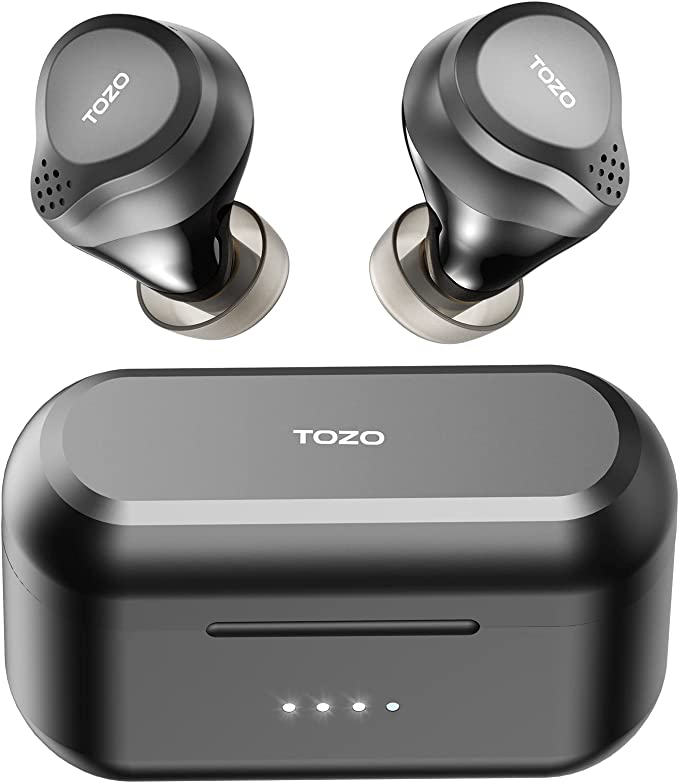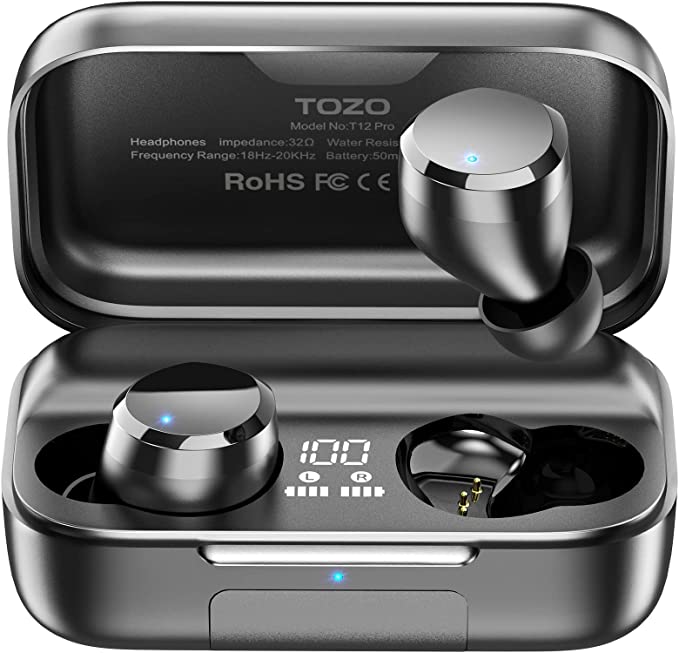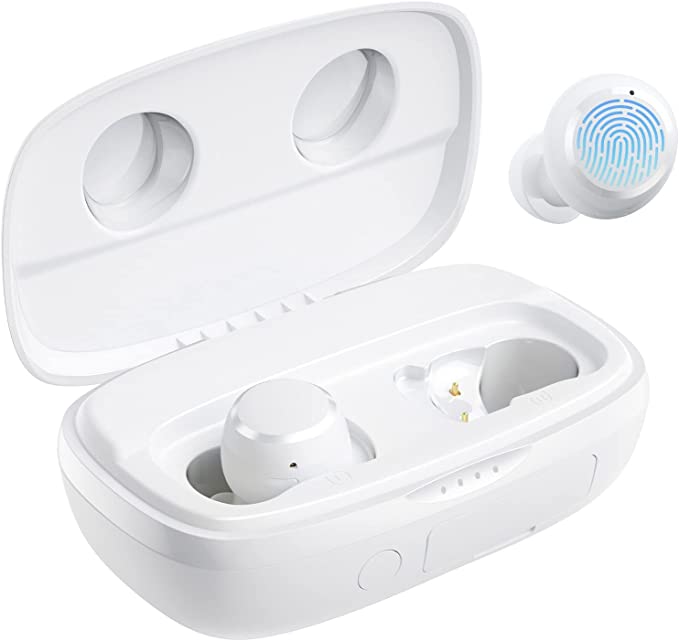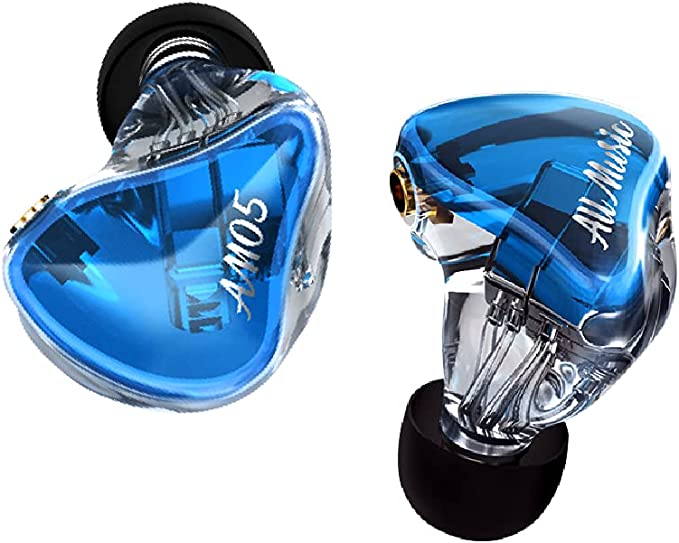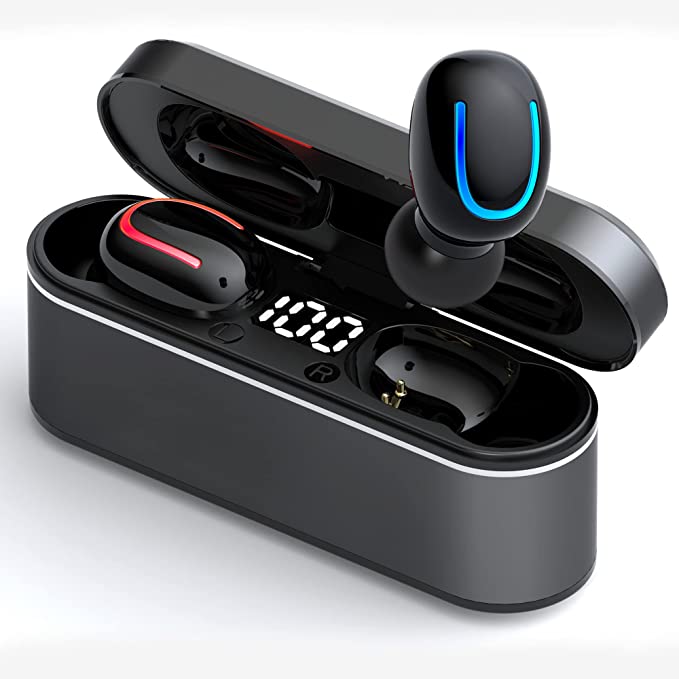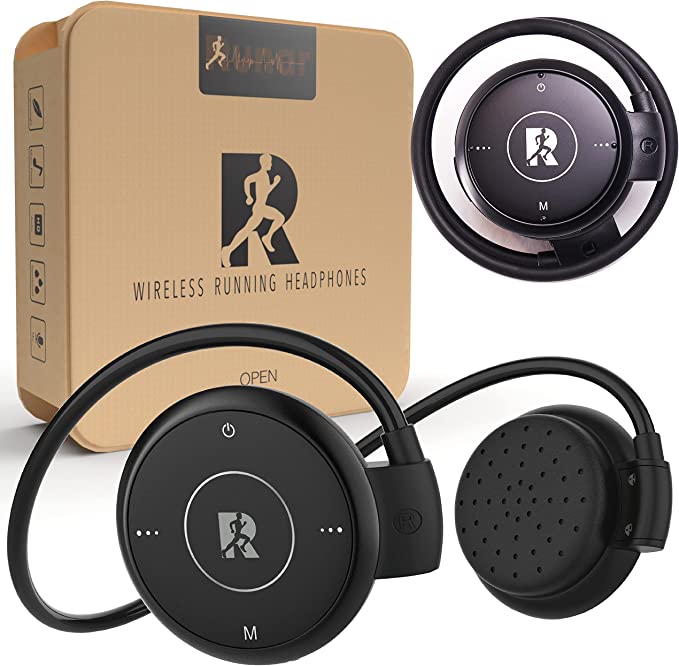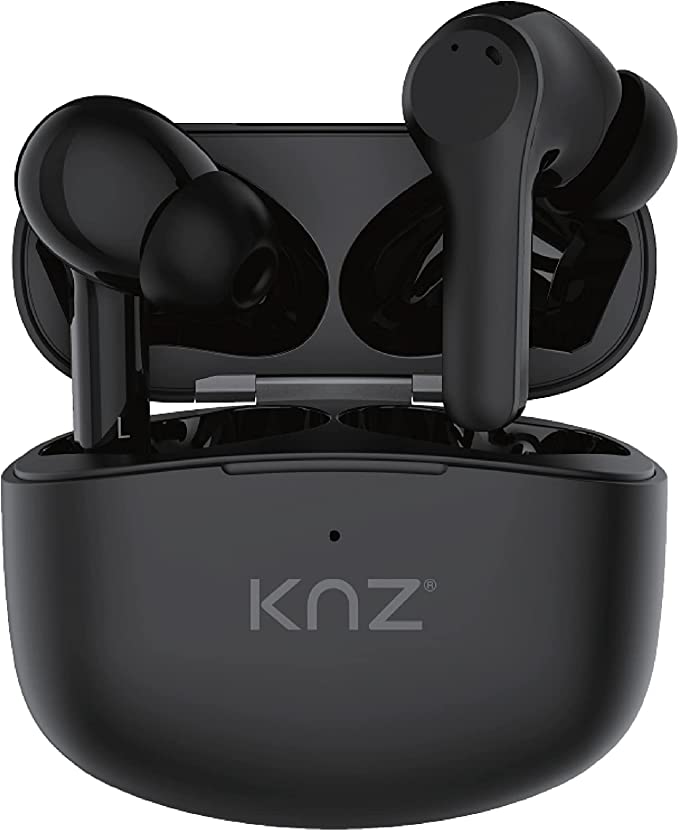Ruisnto V17 Wireless Bluetooth Earbuds: 100-Hour Playtime for Your Active Lifestyle
Update on March 20, 2025, 1:09 p.m.
The crackle of early radio broadcasts, the bulky “portable” radios of the mid-20th century, and finally, the sleek, wireless earbuds of today – the journey of audio technology has been a relentless quest for freedom and fidelity. From cumbersome wires tethering us to devices, we’ve arrived at an era where sound flows freely through the air, powered by invisible waves and ingenious engineering. The Ruisnto V17 wireless earbuds are a prime example of this evolution, embodying the culmination of decades of research and development in wireless communication and audio technology.

Untangling the Wires: How Bluetooth Works
Before we dive into the specifics of the Ruisnto V17, let’s untangle the core technology that makes wireless earbuds possible: Bluetooth. Imagine a universal language spoken by electronic devices, allowing them to communicate wirelessly over short distances. That, in essence, is Bluetooth. It’s a radio-frequency (RF) technology that operates in the 2.4 GHz ISM (Industrial, Scientific, and Medical) band – a globally unlicensed frequency range reserved for, well, industrial, scientific, and medical devices, but also perfect for short-range communication.
Think of it like a conversation between your phone and your earbuds. Instead of shouting across a crowded room (which would require a lot of power and cause interference), they whisper to each other using a specific set of rules (protocols) that ensure they understand each other perfectly, even with other Bluetooth “conversations” happening nearby. These protocols define everything from how devices discover each other (pairing) to how they transmit data (audio, in this case) efficiently and securely.

The Ruisnto V17: A Case Study in Wireless Audio
The Ruisnto V17 wireless earbuds are not just another pair of headphones; they represent a carefully considered blend of technology and design, aimed at delivering a seamless and enjoyable audio experience. The key features that set them apart are:
- Bluetooth 5.1 Connectivity: The latest iteration of Bluetooth technology for enhanced stability and efficiency.
- 100-Hour Playtime (with charging case): A testament to advancements in battery technology and power management.
- Wireless Charging: The convenience of cable-free charging.
- IPX6 Water Resistance: Protection against sweat and rain, making them ideal for workouts.
- Earhook Design: Ensuring a secure and comfortable fit, even during intense activity.
Let’s explore each of these features in more detail, uncovering the science and engineering that makes them possible.

Staying Connected: Deep Dive into Bluetooth 5.1
The Ruisnto V17 utilizes Bluetooth 5.1, the latest major version of the Bluetooth standard. While the underlying principle remains the same (short-range wireless communication), Bluetooth 5.1 brings significant improvements over its predecessors, particularly in three key areas:
- Enhanced Connection Stability: Bluetooth 5.1 incorporates features like “Connectionless Coexistence” and “Advertising Channel Indexing.” These might sound like jargon, but they boil down to this: the earbuds and your device are better at finding and maintaining a strong connection, even in environments with lots of other wireless devices (like a busy gym or a crowded coffee shop). Think of it as having a more sophisticated way of finding and filtering out the “noise” to focus on the specific “signal” of your audio.
- Reduced Latency: Latency is the delay between when a sound is generated (e.g., a gunshot in a game) and when you hear it. Bluetooth 5.1 significantly reduces this delay, making it ideal for activities where audio-visual synchronization is crucial, like watching videos or playing games. This is achieved through optimizations in the way data packets are transmitted and processed.
- Lower Power Consumption: Bluetooth 5.1 is designed to be more energy-efficient, meaning your earbuds and your phone use less battery power to maintain the connection. This is achieved through features like “GATT Caching Enhancements,” which reduce the need for frequent communication between devices. This contributes directly to the V17’s impressive battery life.

Power Up Without Plugging In: Wireless Charging Explained
Wireless charging might seem like magic, but it’s based on a well-understood principle of physics: electromagnetic induction. Imagine two coils of wire, one in the charging pad and one in the charging case of the Ruisnto V17. When you place the case on the pad, an alternating current (AC) flowing through the coil in the pad creates a fluctuating magnetic field. This magnetic field, in turn, induces a current in the coil within the charging case. This induced current is then used to charge the battery inside the case, which in turn charges the earbuds.
It’s like a transformer, but instead of wires connecting the two coils, the energy is transferred through the air via the magnetic field. The efficiency of this transfer depends on factors like the distance between the coils, their alignment, and the materials used. Wireless charging standards, like Qi (which the Ruisnto V17 likely uses, although this needs verification), ensure compatibility between different devices and chargers.
Built to Last: IPX6 and the Science of Waterproofing
The “IP” in IPX6 stands for “Ingress Protection,” and it’s a standard that defines how well a device is protected against intrusion from solid objects (like dust) and liquids (like water). The “X” in IPX6 means the device hasn’t been formally tested for dust protection, but the “6” is crucial: it indicates protection against powerful water jets.
Specifically, an IPX6 rating means the Ruisnto V17 can withstand water projected in powerful jets (12.5 mm nozzle) against the enclosure from any direction without harmful effects. This doesn’t mean you can submerge them in water (that would require a higher rating, like IPX7 or IPX8), but it does mean they’re perfectly safe to use during sweaty workouts or in light rain. The protection is achieved through careful design of the enclosure, using seals and gaskets to prevent water from reaching the sensitive electronic components inside.

Sound Matters: Exploring Audio Quality in Wireless Earbuds
While connectivity and durability are essential, the ultimate purpose of earbuds is to deliver sound. Audio quality is a complex and subjective topic, but a few key factors influence how good earbuds sound:
- Frequency Response: This describes the range of frequencies (from low bass to high treble) that the earbuds can reproduce accurately. A wider and flatter frequency response generally indicates better sound quality.
- Driver Unit: The driver is the component that actually produces the sound. The Ruisnto V17 uses an 8mm composite membrane speaker driver. The size (8mm) is relatively standard for earbuds, and the “composite membrane” suggests a material designed to be both stiff (for accurate bass response) and lightweight (for clear highs).
- Audio Codecs: These are algorithms that compress and decompress audio data for wireless transmission. Common codecs include SBC (the basic Bluetooth codec), AAC (better quality, often used by Apple devices), and aptX (a family of codecs known for even higher fidelity, often found in higher-end headphones). The provided information doesn’t specify which codecs the Ruisnto V17 supports, which is a crucial piece of information for assessing its audio quality potential. Assuming it supports at least AAC, it should provide decent sound quality for most users. However, the absence of aptX support might be a drawback for audiophiles seeking the absolute best wireless audio fidelity.
It is important, to be clear about the difference. Imagine you have a high-resolution photograph (your original audio file). To send it quickly over the internet, you might need to compress it into a smaller file size (like a JPEG). This compression inevitably involves some loss of detail. Audio codecs work similarly. SBC is like a low-quality JPEG – it compresses the audio significantly, resulting in some loss of detail. AAC is like a higher-quality JPEG – it offers better compression with less loss of detail. aptX is like a lossless format (like a TIFF or PNG) – it aims to preserve as much of the original audio detail as possible.
Comfort and Fit: The Ergonomics of Earhooks
Beyond the technical specifications, the physical design of earbuds plays a crucial role in the overall user experience. The Ruisnto V17 features an earhook design, which is particularly beneficial for activities involving movement, like running, jogging, or working out at the gym.
The human ear is a complex and varied structure. A “one-size-fits-all” approach to earbud design simply doesn’t work for everyone. Earhooks provide an extra point of contact and support, anchoring the earbuds securely to the outer ear. This prevents them from dislodging during vigorous movement, a common complaint with standard earbuds.
The effectiveness of an earhook design depends on its flexibility and material. The Ruisnto V17’s earhooks are described as “flexible enough to fit a wide variety of ear shapes.” This flexibility is crucial for accommodating different ear sizes and contours. The material used (likely a soft, pliable silicone, although this needs verification) should also be comfortable against the skin, even during extended use. This is where the principles of ergonomics come into play – designing products that fit the human body comfortably and efficiently.

Real-World Applications: Making the Technology Tangible
All these technical features – Bluetooth 5.1, wireless charging, IPX6, earhooks – might seem abstract on their own. But they translate into tangible benefits for users in various real-world scenarios:
- The Morning Commute: Imagine navigating a crowded subway or bus. The stable Bluetooth 5.1 connection of the Ruisnto V17 ensures your music or podcast doesn’t cut out, even with numerous other wireless devices nearby. The long battery life means you don’t have to worry about your earbuds dying halfway through your journey.
- The Intense Workout: Picture yourself pushing your limits at the gym. The IPX6 water resistance of the Ruisnto V17 protects them from sweat, while the earhook design keeps them securely in place, even during high-impact exercises.
- The Relaxing Evening: After a long day, you can unwind with your favorite audiobook or music, enjoying the convenience of wireless charging. Simply place the charging case on a wireless charging pad, and you’re ready for another day of listening.
- The Unexpected Rain Shower: While the V17 earbuds aren’t designed for submersion, the IPX6 rating safeguards them from unexpected downpours. This means peace of mind whether used outdoors or in.
These are just a few examples of how the Ruisnto V17’s features can enhance everyday life. The combination of long battery life, a secure fit, water resistance, and reliable connectivity makes them a versatile companion for various activities.

Beyond the Basics: A Look at the Future of Wireless Audio
The Ruisnto V17 represents a snapshot of current wireless audio technology, but the field is constantly evolving. We can expect to see even more advancements in the years to come:
- Improved Audio Codecs: New codecs will continue to push the boundaries of wireless audio quality, offering even lower latency and higher fidelity.
- Enhanced Active Noise Cancellation (ANC): While the Ruisnto V17 doesn’t feature ANC, it’s a rapidly developing technology that will likely become more common and effective in future earbuds.
- Spatial Audio: Technologies that create a more immersive, three-dimensional soundstage are becoming increasingly popular.
- Biometric Sensors: Future earbuds might incorporate sensors to track health data like heart rate and body temperature.
- AI Integration: Artificial intelligence could be used to personalize sound profiles, optimize noise cancellation, and even provide real-time language translation.
- Sustainable materials: As consumers, and as a global population, grapple with the realities of climate change, the materials used to create products will come under increasing scrutiny. We can expect more bio-degradable or recycled materials to be used in audio devices moving forward.
The Ruisnto V17, while a product of today, offers a glimpse into this exciting future. It showcases the core technologies that are driving the evolution of wireless audio, providing a convenient, reliable, and enjoyable listening experience for users in a variety of settings. By understanding the science and engineering behind these features, we can appreciate not only the product itself but also the broader technological landscape that made it possible.
